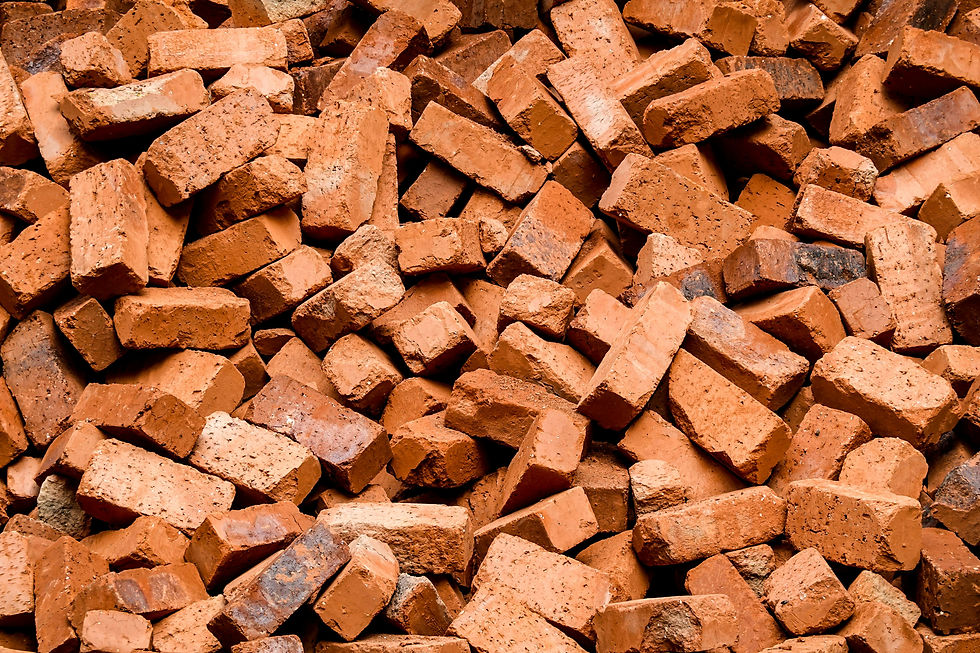Everything You Need to Know About Clay Bricks
- chhikara builders
- Aug 6
- 3 min read

When it comes to choosing the right material for strong, durable, and timeless construction, clay bricks continue to stand the test of time. From traditional homes to contemporary architecture, these bricks are a symbol of strength and aesthetic charm. In this blog, we’ll explore everything you need to know about clay bricks, from how they’re made to why they remain a favorite among builders.
What Are Clay Bricks?
Clay bricks are one of the oldest and most widely used construction materials in the world. Made by molding clay and baking it in a kiln at high temperatures, these bricks offer excellent structural strength, thermal insulation, and durability. Depending on the production method, they can be either machine-made or handcrafted, each offering a unique look and finish.
Key Features of Clay Bricks
Here are some characteristics that make clay bricks stand out:
Durability: With proper maintenance, structures made from clay bricks can last for generations.
Fire Resistance: Being non-combustible, these bricks offer great fire protection.
Thermal Insulation: Clay bricks help in maintaining indoor temperatures, making buildings energy-efficient.
Sound Insulation: Their density and composition provide good soundproofing for walls.
Aesthetic Appeal: Available in various textures, colors, and finishes, clay bricks add a natural and timeless charm to any structure.
How Are Clay Bricks Made?
The process of making clay bricks involves:
Mining and preparing clay
Molding it into shape
Drying the bricks
Firing them in kilns at high temperatures
This careful process ensures uniformity, strength, and resilience. Traditional handcrafted bricks may have slight variations, which can add a rustic appeal to the final build.
Uses of Clay Bricks in Construction
Clay bricks are extremely versatile and are used in:
Load-bearing and non-load-bearing walls
Paving and landscaping
Façades and decorative finishes
Boundary and compound walls
Interior design accents
Their ability to blend structural performance with visual appeal makes them ideal for a wide range of applications.
Advantages of Clay Bricks Over Other Materials
Long-Lasting Strength
Clay bricks retain their structural integrity over time and require minimal maintenance, which reduces long-term costs.
Environmentally Friendly
Clay is a natural resource, and many manufacturers now use eco-friendly production methods. The longevity of clay bricks also reduces the need for replacement, supporting sustainable construction.
Temperature Regulation
They keep interiors cool in summer and warm in winter, helping reduce dependency on artificial heating and cooling systems.
Resistant to Moisture and Pests
Clay bricks absorb minimal moisture and are naturally resistant to termites, mold, and other pests.
Why Builders Trust Chhikara Builders for Clay Bricks
When quality matters, Chhikara Builders stands out as a reliable supplier of clay bricks in Gurgaon, Delhi, and NCR. Known for delivering consistent quality and superior service, Chhikara Builders ensures:
Properly cured and fired bricks for lasting strength
Same-day delivery for hassle-free project management
Competitive pricing without compromising on quality
Professional support throughout the ordering process
Whether you’re building a home, commercial space, or boundary wall, sourcing clay bricks from Chhikara Builders guarantees peace of mind and excellent results.
Final Thoughts
Clay bricks are more than just a building material, they are a commitment to strength, sustainability, and classic beauty. With proven performance, timeless appeal, and environmental benefits, they remain a top choice for modern construction.
If you're looking for high-quality clay bricks for your next project, Chhikara Builders is here to help you build better, one brick at a time.







Comments